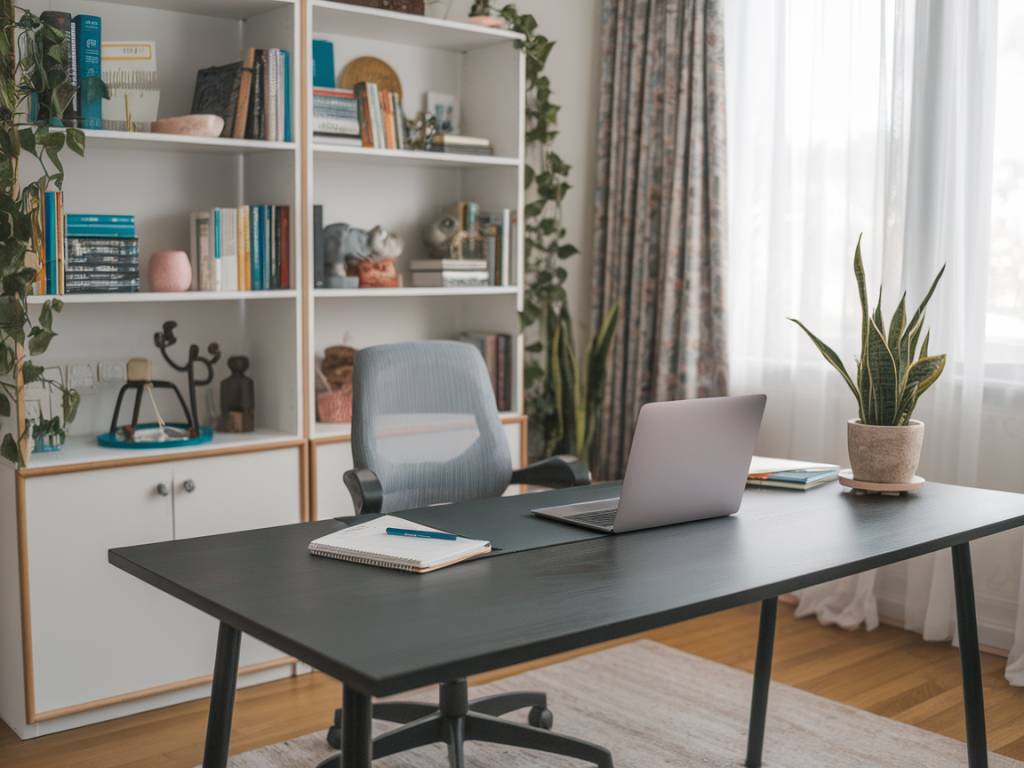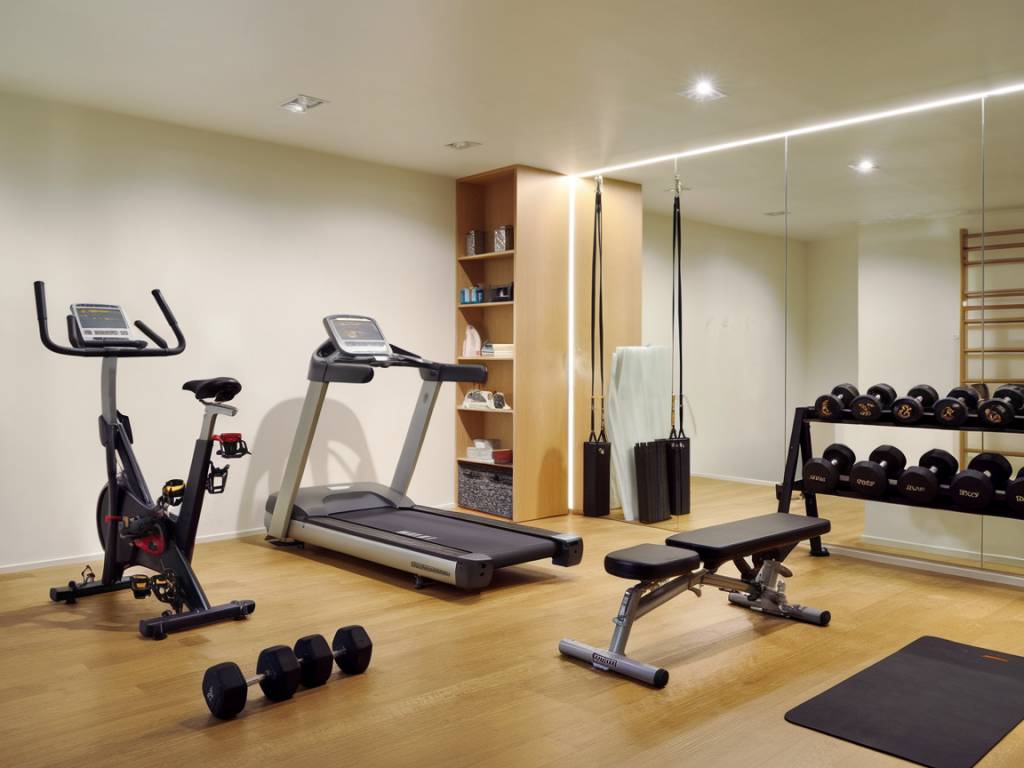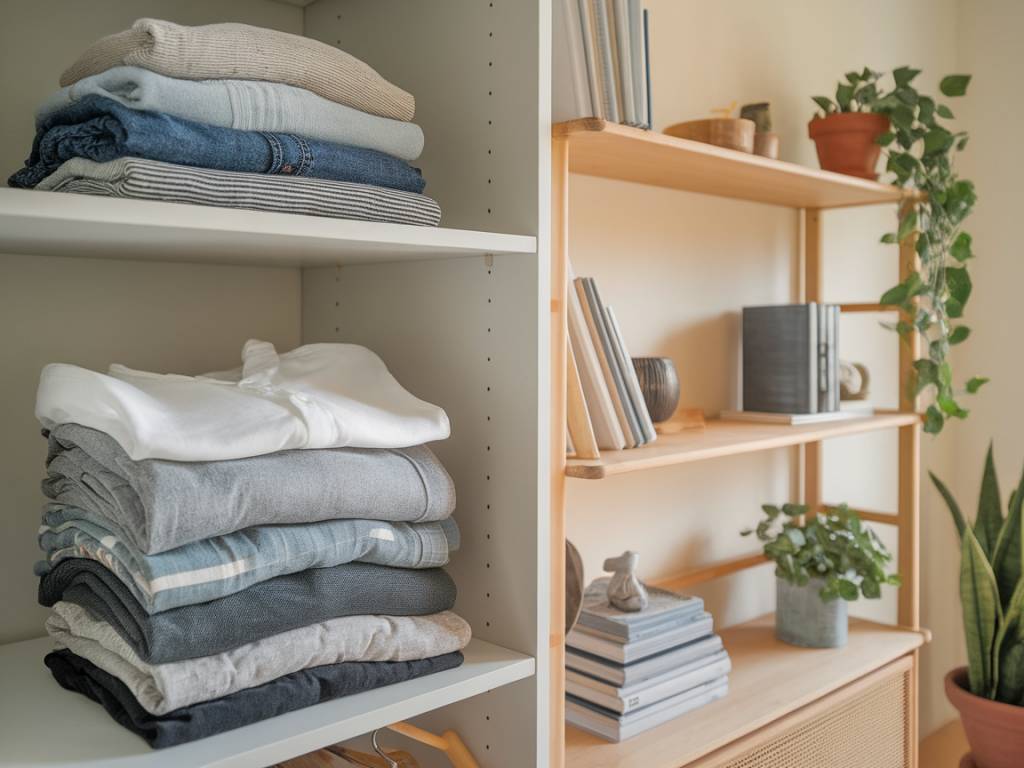Setting up a home office that boosts productivity requires careful planning and thoughtful design. With the growing trend of remote work, creating an optimal workspace at home is more important than ever. This guide will walk you through the steps to establish a home office that enhances efficiency, comfort, and overall productivity.
Choosing the Right Space
First, it’s essential to select a suitable location within your home for your office. The ideal space will depend on your specific needs and the nature of your work. Consider the following factors when choosing your home office location:
- Quietness: Opt for a room far from high-traffic areas to minimize distractions.
- Natural Light: Select a space that receives plenty of natural light as it enhances mood and productivity.
- Space: Ensure there is enough room to accommodate your desk, chair, and any additional equipment you need.
Investing in Quality Furniture
The furniture you choose for your home office has a significant impact on your comfort and productivity. Here are key pieces to consider:
Ergonomic Chair
An ergonomic chair is crucial for maintaining good posture and preventing back pain. Look for chairs with adjustable height, lumbar support, and comfortable padding.
Spacious Desk
Your desk should be spacious enough to hold your computer, documents, and other essential items. Consider a desk with built-in storage options to keep your workspace organized.
Storage Solutions
Effective storage solutions help maintain a clutter-free environment. Opt for filing cabinets, shelves, or desk drawers to store documents and office supplies neatly.
Optimizing Lighting
Lighting plays a crucial role in a productive home office. A well-lit workspace reduces eye strain and enhances concentration. Here’s how you can optimize your office lighting:
- Natural Light: Position your desk near a window to take advantage of natural light.
- Task Lighting: Use task lighting, such as desk lamps, to focus light on specific areas where you need it most.
- Ambient Light: Ensure there is sufficient ambient light to create a well-lit environment without causing glare on your computer screen.
Incorporating Technology
Technology is at the heart of most home offices. To set up a tech-savvy workspace, consider the following:
High-Speed Internet
A reliable internet connection is critical for seamless virtual meetings, data transfer, and collaborative work. Invest in a high-speed internet plan to ensure your connectivity needs are met.
Necessary Gadgets
Equip your home office with essential gadgets like a quality laptop or desktop, a webcam for video calls, and a printer for your document needs.
Cable Management
Cables can quickly become tangled and unsightly. Use cable organizers and clips to keep cables neat and prevent them from becoming a tripping hazard.
Personalizing Your Space
Personalizing your workspace can enhance productivity by making it a place you enjoy spending time in. Here are a few ideas to add a personal touch to your home office:
Decor and Artwork
Incorporate decor and artwork that inspire you. This could be anything from motivational quotes to family photos or paintings.
Plants
Adding plants to your office can improve air quality and provide a calming effect. Choose low-maintenance plants like succulents or snake plants if you’re worried about upkeep.
Maintaining Organization
An organized workspace is key to staying productive. Implement systems to keep your home office tidy:
Desk Organizers
Use desk organizers to keep pens, notepads, and other small items in their place. This helps minimize clutter and makes it easier to find what you need.
Filing Systems
Set up a filing system for your documents. Whether you use physical folders or digital files, ensure everything has a designated place for easy access.
Embracing Ergonomics
Ergonomic considerations are vital for preventing discomfort during long work hours. Here are some tips to create an ergonomically friendly home office:
Monitor Placement
Position your monitor at eye level, about 20 inches from your face. This helps prevent neck strain and promotes good posture.
Keyboard and Mouse Setup
Ensure your keyboard and mouse are placed at a height that allows your arms to be at a 90-degree angle while typing. Consider using a wrist rest to reduce strain.
Standing Desk Options
Standing desks or adjustable desk converters can help reduce the negative impacts of prolonged sitting. Alternate between sitting and standing throughout the day to keep your body active.
Creating a Routine
A consistent routine can significantly boost productivity. Here are some tips to establish a productive daily routine:
Set Working Hours
Define your working hours and stick to them. This helps create a work-life balance and ensures you’re not overworking.
Take Regular Breaks
Schedule regular breaks to rest and recharge. Short breaks help maintain focus and prevent burnout.
Plan Your Day
At the start of each day, list the tasks you need to complete. Prioritize them and allocate time for each task to enhance time management.
Reducing Distractions
Minimizing distractions is crucial for maintaining productivity. Consider the following strategies:
Dedicated Workspace
Use a separate room or a distinct area in your home solely for work. This helps create a mental boundary between work and relaxation.
Noise-Canceling Headphones
Invest in noise-canceling headphones to block out background noise, especially if you share your living space with others.
Managing Notifications
Turn off non-essential notifications on your devices. Limit social media use and other distractions during work hours to stay focused.
Incorporating Wellness Practices
Maintaining your well-being is vital for sustained productivity. Here are some wellness practices to consider:
Stretching and Movement
Incorporate regular stretching and movement into your day. Simple exercises can alleviate stiffness and improve circulation.
Healthy Snacks and Hydration
Keep healthy snacks and water accessible. Staying hydrated and nourished helps maintain energy levels and concentration.
By considering these factors, you can create a home office that not only enhances productivity but also fosters a comfortable and motivating work environment. Whether you’re setting up a home office for the first time or looking to improve your current setup, these tips can help you create a space that supports your professional goals.






